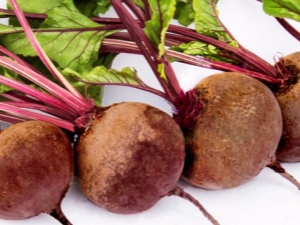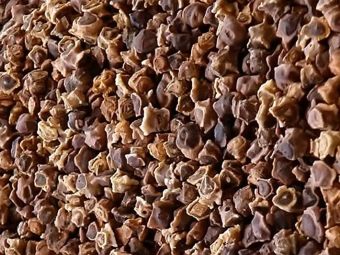How many days does the beets sprout?

Root crops are one of the constant subjects of interest of gardeners and gardeners.But even among them, the beet stands out for its special qualities, it is notable for its impressive popularity. It is necessary to know its specificity in order to prevent serious mistakes when growing.
How to plant?
The benefits of growing beets are beyond doubt. But to guarantee a positive result can not be, if you violate the basic rules of landing. In such cases, it is meaningless to be interested in the timing of the shoot and hope for the latest of them - nothing will come of it. If we approach carefully and observe the established technology, it is possible to grow seeds into beautiful and tasty vegetables, even in open ground and even in relatively harsh meteorological conditions. It is recommended to land in the spring from May 1 to 20 as soon as the ground warms up sufficiently.
A similar requirement must be observed during the autumn planting. The choice between the end of October and November is dictated by the terrain and the actual weather. It is worth waiting until the steady air temperature drops to +4 degrees. If you hurry and sow beets earlier, the seeds will begin to grow during the growing season, and soon the whole crop will die at the initial stage. When seedlings are used instead of seeds, boxes of a special kind are used.
Sowing on seedlings produced in the early days of April. The emergence of seedlings takes about one month.
Choosing the right variety is important, as many beet varieties are unable to grow in cold regions. The bed itself should be thoroughly lit by the sun and have decent drainage. Ideal predecessors are tomatoes, cucumbers and onion crops. It is very bad if earlier cabbage or carrot grew in the same place.
Site preparation includes the following steps:
- cleaning of the smallest vegetable remains;
- the introduction of humus;
- Digging for 1 bayonet shovel;
- adding sawdust or sand to reduce the density of the soil;
- adjustment of acid-base balance in the direction of neutral or alkaline values.
What do the shoots look like?
For experienced farmers, it is not difficult to figure out where the beets are growing, and where completely different plants are growing, but in the absence of experience one should not rely on memory and intuition. The marking of the beds comes with special tags indicating the types and varietal affiliation. But this is only a temporary solution, as it is required to develop recognition skills for a look.
Beets have seedlings similar to those of many other plants. They have relatively large cotyledon leaves, similar in shape to a circle. The density of their leaves and fleshy are at a decent level. Accurate recognition of seedlings is possible only after the formation of true leaves.
Important: at this moment it is possible to evaluate not only the belonging of one or another shoots, but also their general condition.
Short and thickened stems, as well as developed cotyledons, speak of the proper cultivation of beets. This shows that good, healthy seeds were used, and that their potential was fully realized. The reason for alarm is weakened, drooping cuttings, as well as excessively light foliage. Food beets are distinguished by the bright color of both petioles and veins on the leaves. The petioles are long, at the beginning of development they are close in shape to the cylinder, and later the surface acquires a kind of relief.
Mangold, a subspecies of ordinary beet, is mostly an ornamental plant, which has leaves, painted in different colors. They are pink and cream, orange and purple, classic red, and there are also wide transitions between these options. To distinguish a plant from a simple beet, it helps a lot of juiciness and size of petioles, reduced leaves. Their structure looks more delicate, but the problem still remains if early plantings grow alongside. It is recommended to carefully study all the information on growth and development.
When do they appear?
Germination time after planting germinated seeds in open ground is usually 3-4 days. The use of dry seed allows you to get shoots at least 6 or 8 days. But this applies only to cases where the principles of care are strictly followed and the standard irrigation regime is performed. Irregular moistening, especially against the background of poorly heated air, does not allow us to name the exact dates when the beets sprout after sowing.
In most cases, it will be possible to say whether it will be harvested or not in 12-15 days.
Why are missing?
Although beets are not considered to be a capricious plant, sometimes it is difficult to understand why it is not possible to obtain seedlings of a plant.
It is possible to reduce the likelihood of such a development in the following cases:
- choose packaging with full information about the manufacturer of the seeds;
- give preference to seed material of well-known companies;
- strictly follow the instructions for a particular variety;
- take into account that the package usually write the moment of harvesting, and not the total shelf life.
Among the causes of prolonged germination is the most important problem is the lack of drainage. Only it allows you to guarantee a stable yield with intensive watering, as it eliminates stagnant water. It is recommended to make pauses between planting beets in one place for at least two years. The root crop welcomes both organic and mineral dressings. The best time to make them - this is an autumn digging.
If shoots do not appear for a long time, sometimes ignoring the requirements for fertilizer boron is to blame. When preparing seedlings, do not put the boxes in a sun-drenched place. There the earth will dry up. Another risk factor is the loss of germination, caused by the freezing of seeds or their excessively long storage.
When the problem is caused by the wrong care, you have to sow the culture from scratch.
What do gardeners advise?
It is possible to raise the temperature at which plantings exist even after early sowing. For this purpose, use polyethylene shelter beds, extinguishing the effects of bad weather conditions. To force the development of tops helps fertilizing with nitrogen. But it must be dosed, otherwise the taste of root crops will change. It is very useful to crush the crust formed on the ground, because it inhibits the passage of nutrients to the roots.
Very good when using salt water when watering. It lasts longer and better supplies the vegetable with micronutrients. When organizing warm beds, you should introduce as much organic matter as you can chemically decompose before the root reaches this layer. The limiting portion of mineral fertilizers is 0.3 kg per 1 sq. Km. m. Spring mulching is done with peat or rotten sawdust.
The secrets of growing beets - in the next video.




























